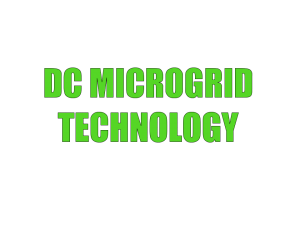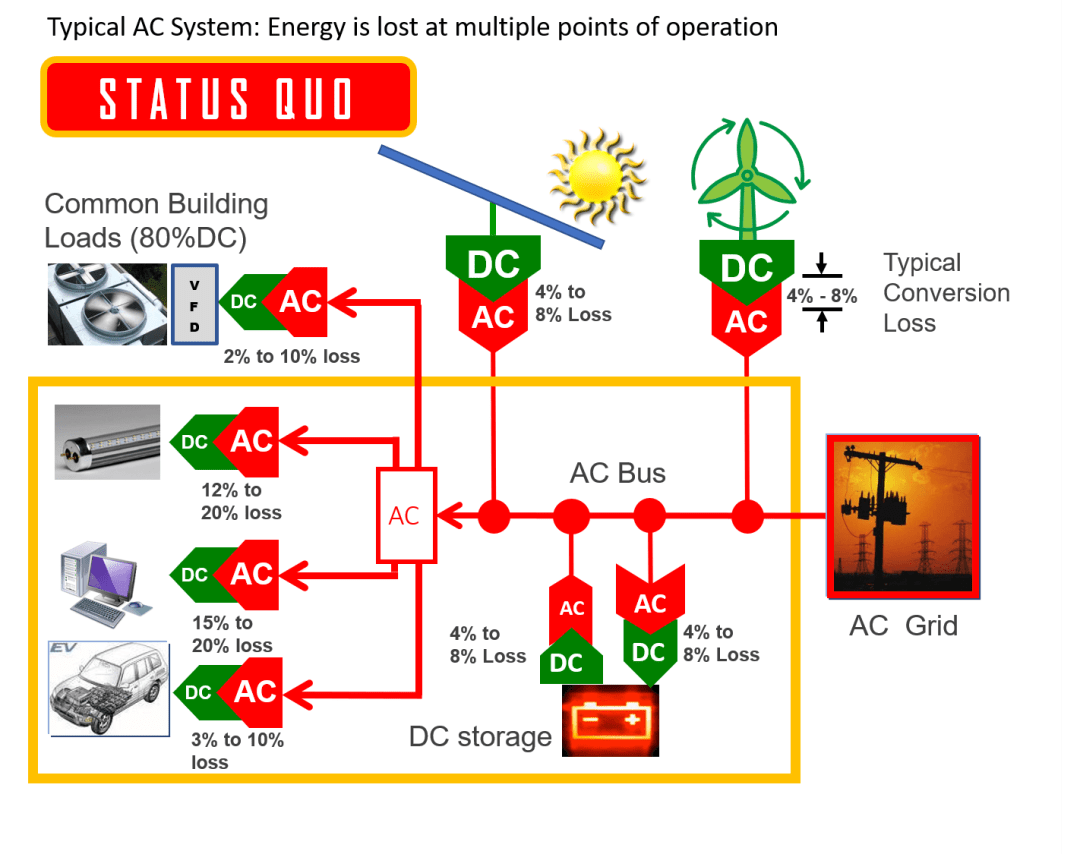- 112 reads

Independence LED Lighting developed its first Direct Current (DC) powered LED fixture series in 2015 for an industrial facility. The DC LED fixtures are “driverless” with 24 volt DC wiring from a “Power hub Driver” (PhD), which is provided by their strategic partner Nextek Power Systems. Together, they are at the forefront of DC Microgrids, with the proven systems that leverage high efficiency power converters and smart controls to optimize energy usage while drawing power from renewables, batteries, and/or the grid. The technology reduces the payback time for lighting return on investments (ROIs) and improves control functionality, yielding the most practical solution for powering LEDs for facilities across the public and private sector.



Lighting Example:
Lighting typically accounts for about 25% of commercial energy use.
11.5% savings with Direct Current lighting on 25% = 2.8% property savings.
LED lights cut consumption by 50%, making half of 25% = 12.5% property savings.
12.5% + 2.8% = 15.3% Total Savings for a property that retrofits with LED Direct Current lighting.
DC based power distribution, lighting, and controls technology offers the most efficient use of energy available. For the Independence LED Lighting / Nextek system, this is achieved by eliminating the traditional LED ‘driver’ in each fixture and replacing it with a centralized “Power hub Driver” that provides control and fixture power at a higher efficiency than any stand-alone driver. This approach also saves significant maintenance cost over time since drivers typically require replacement long before the LED chips are spent.
Results of DC Microgrids:
A significantly improved Total Cost of Ownership (TCO). Beyond the driverless approach, use of safe-to-the-touch Class 2 wiring allows for a much more simplified labor installation as compared to traditional AC methods. Use of simple 2 conductor wire can be installed with Low-Volt or General Trades labor resources.
Added labor advantage with DC Microgrids:
Facility owners and managers save both time and hourly rate costs, as compared to traditional electrical labor.
Added integration advantage with DC Microgrids:
By establishing a DC microgrid based backbone to power lighting, controls and other loads, it can be easier to connect additional power sources to the DC buss such as Photovoltaic (PV) solar, DC power from wind driven generators, fuel cell generators or all 3 renewable sources. By basic engineering of DC voltage performance, a DC bus can be very effectively managed. Accomplishing the same with AC technology would require use of less reliable inverters that then require phase management to work with other systems.
DC Microgrids and the Virtues of Local Electricity
Report on DC Microgrids by: The Institute of Electrical and Electronics Engineers (IEEE), the world’s largest technical professional organization dedicated to advancing technology for the benefit of humanity. Some examples of the vast benefits to DC Microgrid technology include…
-
Avoiding most transmission and distribution losses while also eliminating the waste of energy associated with the conversion of AC to DC, which is required for so many of the electrical loads found these days: LED lights, variable-speed motors, computers, televisions, and countless other forms of consumer electronics—loads that account for a steadily increasing fraction of the electricity consumed.
-
Future army outposts in war zones will probably use them to reduce energy consumption and to deploy wind turbines and photovoltaic panels more easily. Replacing the usual diesel generators with renewable sources of power would be especially valuable in hostile territory, where fuel costs can be enormously high, both in dollars and in lives lost protecting supply lines.
-
Energy-intensive manufacturing operations such as paper production and the smelting of aluminum, which now wastes more than 6 percent of the total energy consumed in the conversion of AC to DC current.
-
Residential and commercial buildings, where they could service the many electrical loads that use DC. These include LED lighting and, increasingly, charging stations for electric vehicles, whose hefty batteries demand (or produce) DC. Heating, ventilation, and air-conditioning (HVAC) equipment and various household appliances are also well suited to powering with DC.
-
Photovoltaic panels that are mounted on the roofs of houses or commercial buildings produce DC power. The electricity flowing from those panels is typically converted to AC using an inverter, which wastes about 10 percent of the energy right off the bat. The AC is then sent to various loads, some of which convert the electricity back to DC, in the process squandering about a third of the energy fed to them. Being able to distribute and use DC within a building would prevent the substantial losses that result from having to make the round trip from DC to AC and back to DC again.
-
Resilience in the face of natural disaster: 2012’s Hurricane Sandy caused more than US $50 billion in damages and left many residents of the U.S. Northeast without power for days, weeks, in some cases even months. DC microgrids would have been less prone to the most common form of damage—the downing of power lines—and the DC electrical equipment itself would probably have exposed far fewer critical points of failure.
With the decreasing cost of electricity generated by photovoltaics and wind turbines, DC microgrids may be the most efficacious way to provide electrical energy to those who have none. Just as cell phone use in the developing world exploded without the prior installation of landlines, DC microgrids could leapfrog over the traditional system of centralized AC generation. The market for microgrids in the developing world could be huge, and the benefits they would bring to what are now grossly underserved regions are monumental.
One of the few resources now available is the EMerge Alliance, an organization of more than 100 member companies interested in fostering the development of DC microgrids for commercial buildings. Alliance members are working to speed the adoption of this approach to improving energy efficiency, in part by setting relevant standards which fight the antiquated building codes that make it difficult to set up the infrastructure needed for generating and distributing DC power locally. While AC is still the most efficient means to move electricity over long distances, the “local” power with DC microgrids wastes less electricity to optimize efficiency and performance.
For more information on this technology, visit the Independence LED DC Microgrid webpage.

